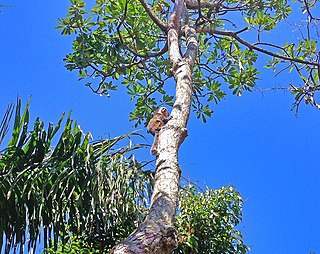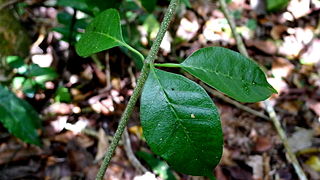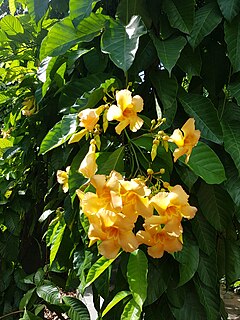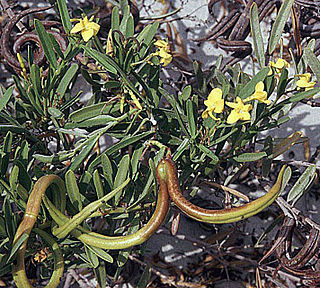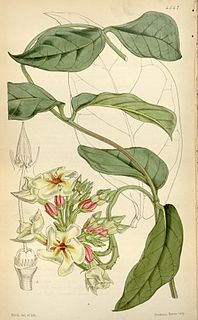| Secondatia | |
|---|---|
| Scientific classification | |
| Kingdom: | Plantae |
| Clade: | Tracheophytes |
| Clade: | Angiosperms |
| Clade: | Eudicots |
| Clade: | Asterids |
| Order: | Gentianales |
| Family: | Apocynaceae |
| Subfamily: | Apocynoideae |
| Tribe: | Odontadenieae |
| Genus: | Secondatia Decne. |
| Synonyms [1] | |
OrthechitesUrb. | |
Secondatia is a genus of plants in the family Apocynaceae first described as a genus in 1844. It is native to Jamaica and South America. [1] [2] [3] [4]
- Species [1]
- Secondatia densiflora A.DC. - Brazil, 3 Guianas, Venezuela, Colombia, Ecuador, Peru, Bolivia, Paraguay
- Secondatia duckei Markgr. - SE Colombia, NW Brazil
- Secondatia floribunda A.DC. - Brazil
- Secondatia macnabii (Urb.) Woodson - Jamaica
- Secondatia schlimiana Müll.Arg - S Colombia, N Brazil
- formerly placed in this genus [1]
- Secondatia arborea(Vell.) Müll.Arg. = Malouetia arborea (Vell.) Miers
- Secondatia difformis(Walter) Benth. & Hook.f. = Thyrsanthella difformis (Walter) Pichon
- Secondatia ferruginea(A.Rich.) Miers = Angadenia berteroi (A.DC.) Miers
- Secondatia stans(A.Gray) Standl. = Mandevilla foliosa (Müll.Arg.) Hemsl.

